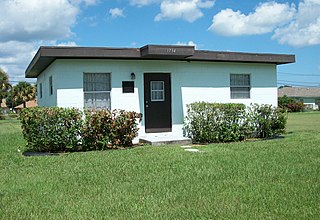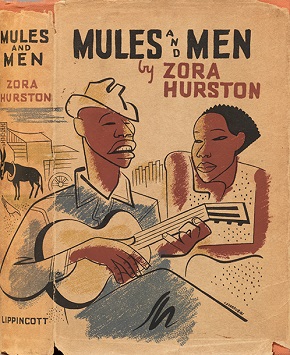
Zora Neale Hurston was an American author, anthropologist, and documentary filmmaker. She portrayed racial struggles in the early-20th-century American South and published research on hoodoo and Caribbean Vodou. The most popular of her four novels is Their Eyes Were Watching God, published in 1937. She also wrote over 50 short stories, plays, and essays.

Alice Malsenior Tallulah-Kate Walker is an American novelist, short story writer, poet, and social activist. In 1982, she became the first African-American woman to win the Pulitzer Prize for Fiction, which she was awarded for her novel The Color Purple. Over the span of her career, Walker has published seventeen novels and short story collections, twelve non-fiction works, and collections of essays and poetry.

Their Eyes Were Watching God is a 1937 novel by American writer Zora Neale Hurston. It is considered a classic of the Harlem Renaissance, and Hurston's best known work. The novel explores protagonist Janie Crawford's "ripening from a vibrant, but voiceless, teenage girl into a woman with her finger on the trigger of her own destiny".

Their Eyes Were Watching God is a 2005 American television drama film based upon Zora Neale Hurston's 1937 novel of the same name. The film was directed by Darnell Martin, written by Suzan-Lori Parks, Misan Sagay, and Bobby Smith Jr., and produced by Oprah Winfrey's Harpo Productions. It stars Halle Berry, Ruben Santiago-Hudson, and Michael Ealy, and aired on ABC on March 6, 2005.

The Zora Neale Hurston House is a historic house at 1734 Avenue L in Fort Pierce, Florida. Built in 1957, it was the home of author Zora Neale Hurston (1891–1960) from then until her death. On December 4, 1991, it was designated as a U.S. National Historic Landmark.

Larry Neal or Lawrence Neal was an American writer, poet, critic and academic. He was a notable scholar of African-American theater, well known for his contributions to the Black Arts Movement of the 1960s and 1970s. He was a major influence in both New York and Chicago, pushing for black culture to focus less on integration with White culture, rather than celebrating its differences within an equally important and meaningful artistic and political field, thus celebrating Black heritage.

Cane is a 1923 novel by noted Harlem Renaissance author Jean Toomer. The novel is structured as a series of vignettes revolving around the origins and experiences of African Americans in the United States. The vignettes alternate in structure between narrative prose, poetry, and play-like passages of dialogue. As a result, the novel has been classified as a composite novel or as a short story cycle. Though some characters and situations recur between vignettes, the vignettes are mostly freestanding, tied to the other vignettes thematically and contextually more than through specific plot details.

Mule Bone: A Comedy of Negro Life is a 1930 play by American authors Langston Hughes and Zora Neale Hurston. The process of writing the play led Hughes and Hurston, who had been close friends, to sever their relationship. Mule Bone was not staged until 1991, when it was produced in New York City by the Lincoln Center Theater.
Charlotte Osgood Mason, born Charlotte Louise Van der Veer Quick, was a white American socialite and philanthropist. She contributed more than $100,000 to a number of African-American artists and writers of the Harlem Renaissance, equal to more than $1 million in 2003. This was especially critical during the Great Depression, when foundation support declined. She helped young artists become established.

Valerie Boyd was an American writer and academic. She was best known for her biography of Zora Neale Hurston entitled Wrapped in Rainbows: The Life of Zora Neale Hurston. She was an associate professor and the Charlayne Hunter-Gault Distinguished Writer-in-Residence at the Grady College of Journalism and Mass Communication at the University of Georgia, where she taught narrative nonfiction writing, as well as arts and literary journalism.

"Sweat" is a short story by the American writer Zora Neale Hurston, first published in 1926, in the first and only issue of the African-American literary magazine Fire!!. The story revolves around a washerwoman and her unemployed husband.

Karla Francesca Holloway is an American academic. She is James B. Duke Professor of English & Professor of Law at Duke University, and holds appointments in the Duke University School of Law as well as the university's Department of English, Department of African & African American Studies, and Program in Women's Studies. Holloway is a member of The Wintergreen Women Writers Collective
Eleanora Elaine Tate is an American author and educator. Notably, she has written books and short stories for children and young adults and also worked as a newspaper reporter.

Mules and Men is a 1935 autoethnographical collection of African-American folklore collected and written by anthropologist Zora Neale Hurston. The book explores stories she collected in two trips: one in Eatonville and Polk County, Florida, and one in New Orleans. Hurston's decision to focus her research on Florida came from a desire to record the cross-section of black traditions in the state. In her introduction to Mules and Men, she wrote, "Florida is a place that draws people—white people from all over the world, and Negroes from every Southern state surely and some from the North and West". Hurston documented 70 folktales during the Florida trip, while the New Orleans trip yielded a number of stories about Marie Laveau, voodoo and Hoodoo traditions. Many of the folktales are told in vernacular; recording the dialect and diction of the Black communities Hurston studied.
Jonah's Gourd Vine is Zora Neale Hurston's 1934 debut novel. The novel is a semi-autobiographical novel following John Buddy Pearson and his wife, Lucy. The characters share the same first names as Hurston's parents and make a similar migration from Notasulga, Alabama to Hurston's childhood home, Eatonville, Florida.

Trudier Harris is an American literary scholar, author, writing consultor, and educator. She is a Professor Emerita at the University of Alabama and held the position of J. Carlyle Sitterson Distinguished Professor at University of North Carolina at Chapel Hill. Harris is a member of the Wintergreen Women Writers Collective.

Barracoon: The Story of the Last "Black Cargo" is a non-fiction work by Zora Neale Hurston. It is based on her interviews in 1927 with Oluale Kossola who was presumed to be the last survivor of the Middle Passage. Two female survivors were subsequently recognized but Cudjoe continued to be identified as the last living person with clear memories of life in Africa before passage and enslavement.
Ann Graves Tanksley is an American artist. Her mediums are representational oils, watercolor and printmaking. One of her most noteworthy bodies of work is a collection based on the writings of African-American novelist and anthropologist Zora Neale Hurston. The Hurston exhibition is a two hundred plus piece collection of monotypes and paintings. It toured the United States on and off from 1991 through 2010.
The Zora Neale Hurston/Richard Wright Foundation is an American literary nonprofit organization that supports the development and careers of Black writers. The Foundation provides classes, workshops, an annual conference, and offers the Hurston/Wright Legacy Award and the North Star Award, among others. Writer Marita Golden and cultural historian Clyde McElvene founded the organization in 1990.
Virginia M. Burke was a pioneering scholar of composition and Black literature at the University of Wisconsin-Milwaukee. She was a previous president of the Wisconsin Council of Teachers of English.












